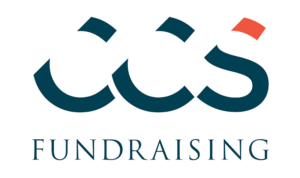Is your nonprofit acquiring new donors but finding it challenging to keep them? If so, you’re not alone. The 2024 CCS Philanthropy Pulse report reveals that donor retention remains a top challenge, as only 48% of nonprofit organizations reported keeping over half their new donors from the previous 12 months.
Successful stewardship builds trust and loyalty. Further, donors who feel appreciated and connected are likelier to become repeat contributors, increase their giving over time, fulfill multi-year pledges, and even advocate for your organization among their networks.
What Is Donor Stewardship?
Stewardship is a relationship-building process requiring the strategic management of donors through consistent communication, personalized engagement, and demonstrated impact.
A successful stewardship program:
- Improves your donors’ experience through engagement and appreciation
- Educates the donor about your organization’s mission, particularly as new programs emerge
- Highlights donor impact
- Accelerates pledge fulfillment through consistent interaction
- Builds personal relationships between the donor and the assigned relationship manager
- Increases donor retention as donors feel valued and appreciated
A positive stewardship experience has the power to turn a one-time donor into a longstanding partner of your organization.
best practices for strengthening your donor stewardship program
1. timely and grateful acknowledgement
Promptly thank a donor for their contribution—ideally within 24 to 48 hours. Express sincere gratitude and mention how their support will make an impact. Acknowledgment should be tiered based on the donor relationship, with some donors receiving standardized, personalized, letters while major donors should receive phone calls and hand-written notes. For transformational gifts, senior leadership should make personal, immediate outreach to the donor.
2. regular, personalized communication
Utilize data analytics to understand donors’ preferences, interests, giving history, and communication styles. Tailoring communication based on a donor’s preferences and interests will foster a stronger connection. Use existing touchpoints and think outside the box to maintain donor engagement, such as events, volunteer opportunities, or guided tours. Provide updates on the organization’s programs, achievements, and impact—ensure you are connecting with the donor throughout the year in ways beyond solicitation.
3. Involving donors in your mission
Engage donors beyond financial support and let donors experience your nonprofit’s mission in action. This could include engaging them as volunteers, event attendees, committee advisors, or key stakeholders or having them share their expertise with your organization.
4. recognition opportunities
Discuss recognition or naming opportunities with the donor to identify what would be most meaningful, depending upon the size of their gift. These opportunities should be customized for each prospect—many donors are not looking for public recognition, so it’s important to know their preferences.
5. impact reporting
Show donors the tangible impact their support has made on the organization through individual impact reports, newsletters, annual reports, or other creative storytelling opportunities. Use data to quantify the outcomes of their support as much as possible. Visual representations such as infographics or success stories can make donors feel closer to the mission and see the impact they make with their gifts.
6. seeking feedback
Solicit donor input via surveys, focus groups, or one-on-one conversations to understand their preferences, satisfaction levels, and suggestions for improvement. With so many organizations making timely donor stewardship a standard practice, creativity can make all the difference in retaining strong donor relationships.
7. diversifying your approach to donor stewardship
Think outside the box to create memorable and meaningful donor interactions. Innovation can look like sending a personalized video message from beneficiaries expressing gratitude, an invitation to insider events, or behind-the-scenes access to the organization’s work. Creative stewardship approaches leave a remarkable impression and deepen the donors’ emotional connection to the cause.
8. placing a premium on efficiency
Maximize your capacity—effective stewardship does not necessarily require additional resources. Organizations should leverage existing resources such as volunteer networks, social media platforms, and current staffing infrastructure to enhance a donor’s experience. For example, volunteers can write personalized thank-you notes, or donors can be invited to a behind-the-scenes day in the office.
donor stewardship helps you find—and keep—your donors
Stewardship and fundraising should be viewed as the same: a continuous journey of nurturing relationships, building trust, and inspiring generosity. Organizations can cultivate an engaged and committed loyal donor base by prioritizing donor relationships and implementing best practices. We repeatedly see that effective stewardship drives donor retention and increased giving.
More Insights
How to Get Alumni to Donate Through Effective Internal Partnerships
Learn how to get alumni to donate for fundraising success with effective internal partnerships at your education institution.
Custom GPTs for Fundraising: A Nonprofit Guide
Learn about Custom Generative Pre-Trained Transformers (GPTs), their application in fundraising, and how you can harness their capabilities to streamline your fundraising efforts and forge deeper connections with donors.
